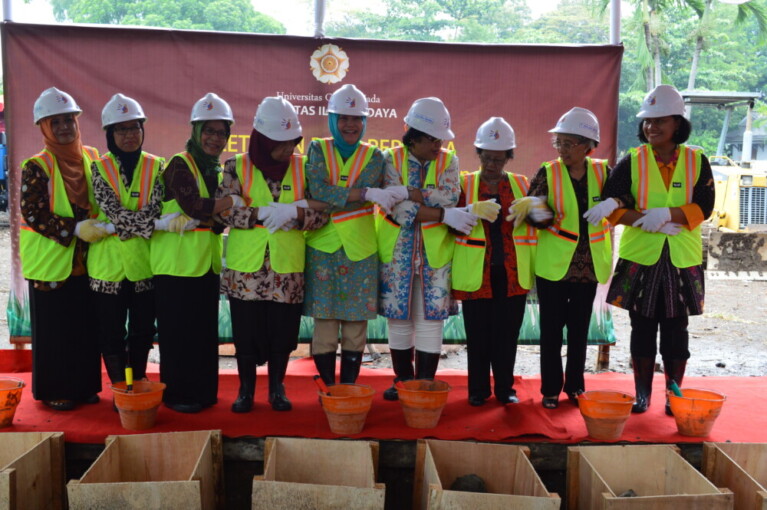
The construction of the new building of Faculty of Cultural Sciences started on Thursday (31/3), marked by the laying of the first rock by Rector of UGM and 8 representatives from the Faculty. The new building that will be named R. Soegondo building will be used for lectures, offices, and language training centre.
“I hope the new building can be used to implement the mandate to educate the nation and benefit society,” Faculty Dean, Dr. Pujo Semedi Hargo Yuwono, M.A., said when opening the event.
He explained the new building would be strong with feminine touch as the initiation of the construction was done by the previous female dean. Thus, the construction ceremony was opened by nine women.
Rector of UGM, Prof. Ir. Dwikorita Karnawati, M.Sc., Ph.D. appreciated this. “I am proud that Faculty of Cultural Sciences can make it independently to prepare the funding. We at the university level gave assistance, too, but the biggest part is on the Faculty,” she said.
In her remarks, the Rector said that the meaning of the construction was not only on physical matter, but also a nationall hall beneficial for building knowledge and culture. She asked for attention from academic community to create a good learning environment, comfortable, and conducive to support learning and teaching activities.
To realise these goals, the building is constructed under the environmentally friendly concept, using energy efficient technology. This is in line with the concept of green campus as promoted by previous Rector, Prof. Dr. Pratikno, M.Soc.Sc. He wished to build a campus which was open and united with the environment.
Dwikorita hoped the new building could be part of the big plan, used for the state and nation’s benefits. “Hopefully, the spirit of cultural development can spark even higher, more vibrant with many creations that will be made, and support Indonesia to jump to a more advanced future,” she added.
The R. Soegondo building will have seven floors and one semi-basement, measuring 9,985 m2. The first of three blocks will be planned to complete in 12 months until March 2017.

